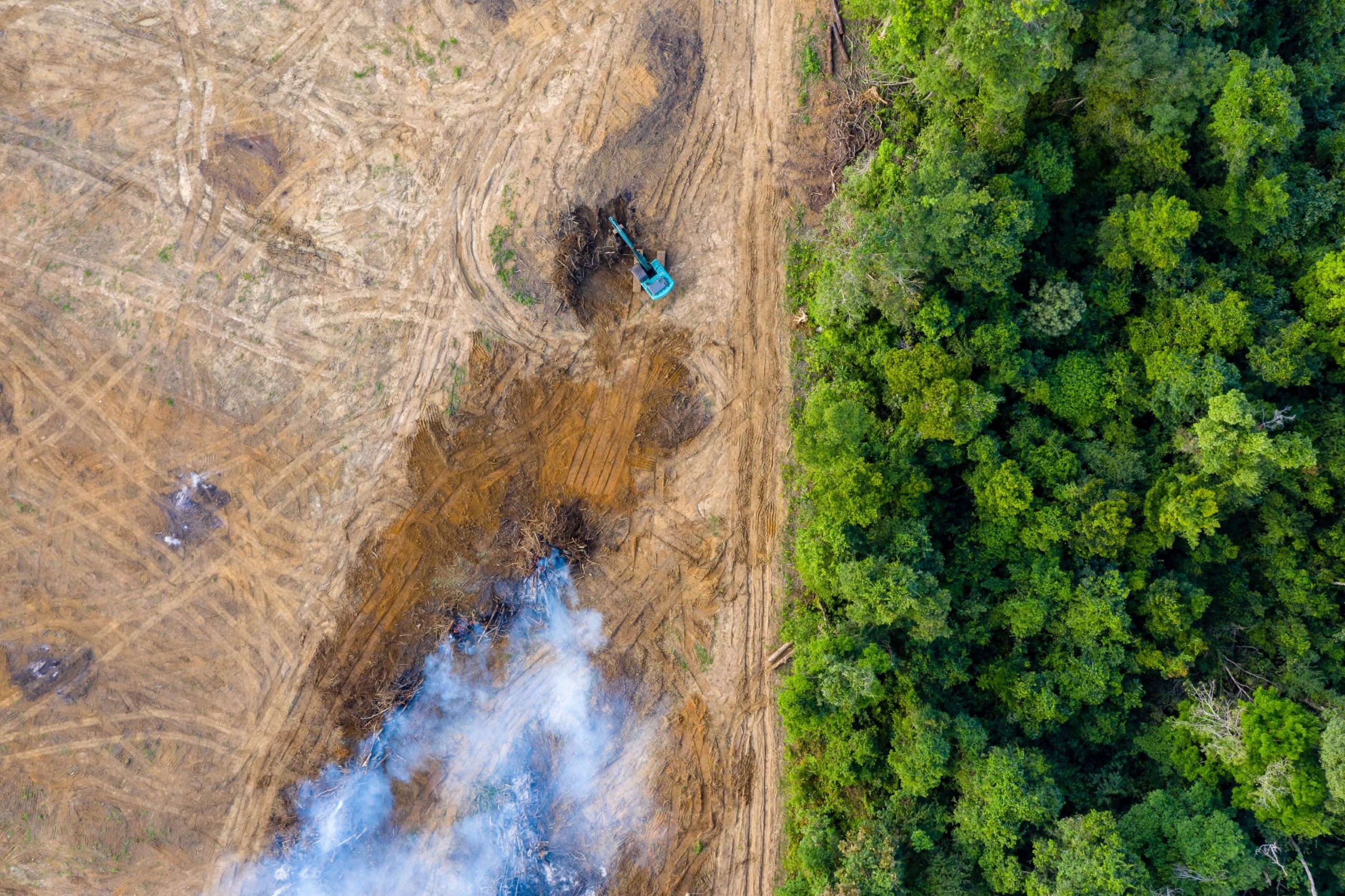
The voluntary carbon market (VCM) is a decentralised global market in which individuals and corporations can opt-in to buying and selling carbon credits, representing some form of environmental or climate action. The VCM first began in the 1990s, but only really took off towards the end of the last decade, as companies increasingly seek to align themselves with tightening national and global emissions reduction targets, as well as addressing a growing public demand for action against climate change.
Often climate credits are bought by companies with emissions offsets in mind, enabling polluters such as non-renewable power plants to balance their emissions for “net zero”. These come largely from carbon sequestration projects, such as reforestation, mangrove swamp restoration, or engineered carbon removal facilities. Some come from biodiversity projects or social programmes.
At their core, voluntary carbon credits are a way for corporations to offset difficult-to-decarbonise emissions, and to signal a level of movement against climate change. However, exactly what this movement entails can be vague or undefined, because taxonomies and regulation within the VCM remain lax. “Currently, there are over 170 different ways to generate a carbon credit,” Luke Leslie, CEO and co-founder of carbon credits supplier Carbon Neutral Royalty, told Future Power Technology. The variety of carbon credits range drastically from “high-integrity” projects with genuine environmental effect, to those with little or no impact. These categories, Leslie says, “are fast evolving”.
Here lies the crux of the debate. While some organisations hail carbon credits as an authentic method of decarbonisation, a necessary addition to corporations’ journeys to net zero, other groups argue that they are ultimately a scam, giving companies an easy but ineffective alternative to reducing their own emissions. So which is it, and how might changing regulations affect the VCM landscape?
Lax regulation breeds “worthless” offsets
Already this year, several scandals relating to corporate misuse of carbon credits have made headlines. Two in particular have stuck out. The first came in mid-January when a joint investigation by the UK’s The Guardian, Germany’s Die Zeit and online climate reporters SourceMaterial revealed that more than 90% of rainforest offsets offered by Verra, the world’s leading carbon credits certifier, were likely to be “phantom credits” and did not represent genuine emissions reductions. Multinationals including Disney, Shell, BP, easyJet, Leon, and Gucci used Verra’s credits to earn low-carbon branding for their goods. Now, it seems that these labels were never truly earned.
Specifically, the investigation found that only a handful of Verra’s rainforest projects showed evidence of tangible deforestation reductions, with further analysis suggesting that 94% of the credits sold to companies had no benefit regarding climate change. In at least one of Verra’s carbon offsetting projects, human rights violations were a serious concern. On a visit to a major project in Peru, journalists at The Guardian were shown videos that residents said depicted their homes being destroyed with chainsaws and ropes by guards and police working alongside carbon credit companies. Local people also described forced evictions from their homes.
How well do you really know your competitors?
Access the most comprehensive Company Profiles on the market, powered by GlobalData. Save hours of research. Gain competitive edge.

Thank you!
Your download email will arrive shortly
Not ready to buy yet? Download a free sample
We are confident about the unique quality of our Company Profiles. However, we want you to make the most beneficial decision for your business, so we offer a free sample that you can download by submitting the below form
By GlobalDataVera criticised the investigation’s methodology and said the conclusions drawn were “incorrect”. The company also said that since 2009, its work has enabled billions of dollars to be put into forest preservation and restoration.
Chevron using “junk” carbon credits
Then in mid-May, a study looking at oil giant Chevron’s use of carbon offsets made headlines. The report, titled “Destruction is at the heart of everything we do”, came from NGO watchdog Corporate Accountability. It found that 93% of Chevron’s carbon credits, purchased through the VCM to offset some of its own substantial emissions, “seem to be worthless” or actively harm communities. Both its natural and engineered carbon removal projects are either “junk”, contributing nothing to emissions reductions, or severely underperforming, sometimes missing targets by 50%. The study found that 42% of the company’s offset schemes are linked to claims of local community abuse or environmental degradation, and could be further fuelling climate breakdown.
At the time, a spokesperson for Chevron challenged the report’s conclusions. “The cited report is biased against our industry and paints an incomplete picture of Chevron’s efforts to advance a lower carbon future,” external affairs adviser Bill Turenne said in an email to Offshore Technology. “Chevron supports offsets as part of that effort and views them as an important market-based approach to efficient carbon reductions.” Turenne added that “the majority” of the credits referred to in the study are “compliance-grade” and accepted by the governments in the regions where the company operates.
Despite recent scandal, properly selected and well-calculated carbon credits are considered to be a useful tool in funding climate change mitigation projects. The UK’s independent climate advisory body the Climate Change Committee encourages the use of “high-integrity” nature-based and biological credits by businesses as an additional means of climate action, although it states that even top-quality credits can play but a “small role” in the transition to net zero.
“Making carbon market buyers a bit more careful”
In January, on the same day as the publication of the Verra investigation, Nat Keohane, president of the Centre for Climate and Energy Solutions in the US, told The Guardian: “We need to use every channel we can for funding… We can’t leave anything on the table. We know that we will not be able to meet even 2°C if we do not end tropical deforestation,” but reiterated that carbon credits “should be complimentary, not a substitute” for cutting emissions.
When asked about the possible effects of bad press on the VCM as a whole, Leslie said that he sees the scrutiny as a “positive”. “What we’re seeing now is much more attention from the media on the VCM, and this is all part of the VCM’s growing pains,” he says. “If anything, it’s just pausing immediate decisions and it’s making buyers a bit more careful about what they buy, making sure that they do their own their own diligence.
“Things need to continue improving quickly in order to for the VCM to scale up,” he adds, explaining that scrutiny is “needed” so that improvements can be made to the methodologies used to calculate a carbon credit’s worth. “And you can see these methodologies getting updated all the time,” he reassures, but concedes that stories of worthless or harmful carbon offsets “are not great, reputationally” for the VCM.
“I think in the short-term it does shake a market that is fragile, but it’s a difficult one. You always need to have this scrutiny in order for change to accelerate. The way that the VCM operates today needs to be improved.”
The turning of the tide
In the middle of July something did happen: the Voluntary Carbon Markets Integrity Initiative (VCMII), an international non-profit organisation that defines standards for carbon credit trading, published an updated code of practice setting out rules on how to use carbon credits in ways that accelerate climate change mitigation.
The new code, developed through a multi-organisational collaborative process with stakeholders, provides recommendations and guidance to corporations and other non-state actors on how they can credibly use carbon credits to make genuine environmental claims, and what specifically these claims can be. The rules aim to set a global standardised method for assessing the quality of corporate environmental claims, in an effort to stave off accusations of greenwashing and salvage the VCM’s reputation. The code also advises companies looking to purchase “high-integrity” credits to do so from another standards body, the Integrity Council for the Voluntary Carbon Market, which is due to publish its own guidelines on what makes a “quality” credit soon.
Perhaps most significant is the code’s official recommendation that companies stop claiming that carbon credits offset, or “cancel out”, their own emissions. Instead, it suggests that credits should only be used to contribute to climate change mitigation as an additional step to an organisation’s own direct emissions reductions. It also states that these reductions should be clearly and transparently disclosed on an annual basis to show, in scientific terms, how they meet targets that align with the Paris Agreement.
The VCMII’s new recommendations shake the foundations upon which carbon credits were built. Currently, they are used overwhelmingly by organisations to make emissions-based environmental claims, to claim “climate neutrality” while still polluting. “It could have quite a few ripple effects within the VCM,” Leslie says.
Enabling carbon markets to scale up
“It should be positive because what [the VCMII] is saying is: ‘you can’t use this for compensation claims, but you can use it for beyond-value contribution claims’. Companies are nervous about buying a credit and making an [environmental] claim and then getting attacked for it. If you remove that ability to be criticized, then it may mobilise more buyers and more demand.” In other words, clarifying the intended use of carbon credits could remove the possibility of backlash making an enticing, risk-free prospect for companies.
“But the other effect which we’re still working through is: what does this mean in terms of the type of carbon credit that buyers buy? Because if it’s not to offset, if it’s just a contribution, well, does that mean the UN’s Sustainable Development Goals are going to become more important? Does it mean there will be more of a focus on biodiversity? What we need to see now is more guidance on how these framework-setters intend these new claims to operate. We can then take a view on what that means from a demand perspective.”
Tightening taxonomies and regulations, in theory, leaves less room for dishonesty, making scandal less common and greenwashing more difficult. More clear and precise methodologies for calculating the value of a carbon credit will also aid companies in navigating their way to authentic environmental credentials. According to Leslie, the voluntary market still needs to grow “by about a hundred times what it is today”. If the VCM is here not just to stay, but also to scale up, regulatory frameworks will have to keep improving to guarantee corporate responsibility and ensure corporate accountability. Leslie concludes: “We want to see this happening much faster than it is.”





